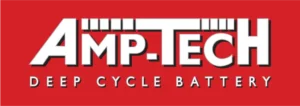
8 Advantages of AGM Batteries
If you’re in the market for a deep-cycle battery and must choose between Lead-Acid Absorbent Glass Mat Technology (AGM) or Lithium technology, consider the numerous benefits of AGM batteries. They are cost-effective, safe, durable, easy to charge and maintain, and have a lower environmental impact. Here are eight reasons why you should consider getting an AGM battery:

Cost:
When it comes to cost, AGM batteries are very competitive. They are generally more pocket-friendly upfront and have a better cost per life than most Lithium-ion batteries, making them the wiser choice, especially for applications requiring multiple batteries. Of course, you would find some very low-priced lithium batteries, the quality and safety of which may, at best, be questionable.


Safety:
When it comes to safety, AGM batteries are a clear winner. They are simple and safer for everyday use, and there are no known cases of overheating to the extent of causing a fire. AGMs can be stored, charged, and discharged at wider temperature ranges than their Lithium counterparts, which may suffer in extreme heat or cold performance. On the other hand, Lithium-ion batteries have such a high energy density that they are dependent on the quality of their built-in battery management system (BMS) to prevent thermal runaway and mitigate the risk of fire.
Durability:
AGM batteries, with their long-standing reputation for resilience against vibrations and shocks, instill a sense of confidence. They are the ideal choice for applications in off-road vehicles, boats, and other environments where rough handling might occur, ensuring your power needs are always met.


Charging:
AGM batteries can often be charged using most modern standard chargers without requiring specialized equipment or monitoring systems as those for lithium-ion batteries.
Maintenance:
AGM batteries, like lithium-ion batteries, are maintenance-free and do not require water refilling. This convenience makes them a hassle-free choice, allowing you to focus on your tasks without worrying about battery upkeep.


Storage:
For batteries in storage, a discharged AGM battery can be recovered by subjecting it to slow charging and poses no risk of the battery being unusable/unrecoverable. On the other hand, Lithium has a lower discharge rates in storage, but once it gets completely discharged, it may be unrecoverable unless the battery’s battery management system (BMS) is accessed.
Availability:
AGM batteries are widely available and have been on the market for a long time, making them an established and well-trusted technology.


Environmental Impact:
99% of all Lead Acid/AGM batteries are recycled, with an established used battery collection network and proven environmentally sound recycling facilities. Most new lead acid batteries utilize recycled materials, reducing any impact of mining for new metals. On the other hand, lithium recycling is more complex, costly, and less established, and may be a growing issue as more and more used lithium batteries are generated, and substantial tonnages end up in landfill. Massive new mining efforts to dig up lithium and other heavy metals from the earth are also required to make new lithium batteries.
Lithium batteries have definite advantages in weight, energy density, and longer lifespan. However, AGM batteries may be more suitable for specific applications due to their lower cost, proven better performance over wider temperature ranges, inherent safety, maintenance-free operation, robust construction, simplicity, and a much lower overall impact on our environment.
Consider these choices.


